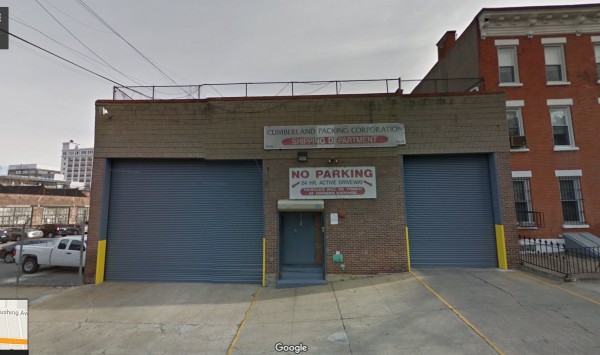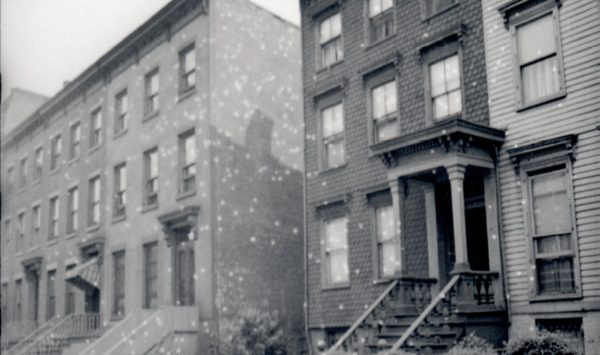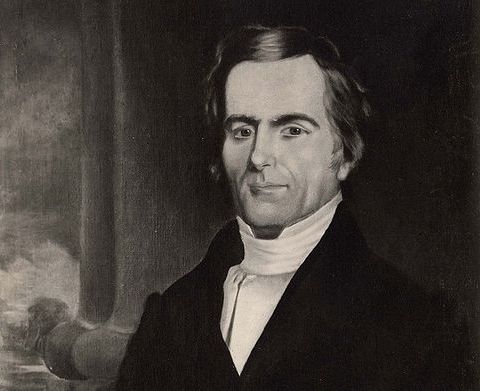GEORGE WASHINGTON SLEPT HERE… (1776)

******************************************************************************************************************************** Brownstone Detectives investigates the history of our clients’ homes. The story you are about to read was composed from research conducted in the course of one of those investigations. Do you know the history of YOUR house? ******************************************************************************************************************************** In today’s great efforts to preserve our historical heritage, particularly as regards the ancient homesteads of our forebears, it gives great sadness to learn of the loss of old structures which once graced our city. One such house not only stood at one time as the last of its type, but it also had borne witness to historical events which contributed to the foundation of our country. Inside of the old Boughton House, which at one time existed close to the Wallabout Bay on Cumberland Street at about No. 33, George Washington had sat often in conference with his military leadership on the point of repelling the British occupational force during the Battle of Brooklyn. The “mansion,” which stood directly in line of the fortifications and redoubts thrown up by the Continental troops, found itself “smack in the middle” of these military improvements. It was an old-style dwelling of Dutch Colonial Architecture, with eaves and garrets, and was a true relic of Revolutionary times. There is no official record of when the house was erected, but around 1915 when workmen were repairing the roof, they found a shingle bearing the inscription “Erected 1727.” Later during the war, when Mr. Boughton’s house was used to quarter British soldiers,, the prison ship Jersey […]
THE “GOODFELLAS” OF CUMBERLAND STREET

One of the Brownstone Detectives’ first House History Books, No. 231 Cumberland Street: The Story of a House, tells the story of an 1852 antebellum frame home just steps from Fort Greene Park. It’s an action-packed tome, replete with treachery, “poudrette,” “small art,” SROs, and the gangland figures from “Goodfellas.” Here is a brief timeline of the history of this single landmarked property, matched up with “spreads” from the book: THE HISTORY OF A BROOKLYN HOUSE The land beneath which No. 231 would someday rise, started out as a tobacco farm owned by the first Italian immigrant to New York, Pietre Cesare Alberti. The farmland would eventually be built upon in 1851-2, when builder John Ross constructed a row of three homes there. First owned by a woman with a tragic history, a melodrama involving treachery, another man, and an infant daughter – which became the gossip of the newspapers of the time – No. 231 was rented out throughout the the 1850s and 1860s, in addition to many returning Civil War veterans, to merchants and their small families. One of those merchants featured prominently in the founding of the Lafayette Avenue Presbytery Church. Before this, however, he had begun his interesting career as a Night Soil Man – starting a company which, amongst other “agricultural” endeavors, collected human excrement from the backyard privvies of Brooklyn, selling this “compost” to Long Island farmers as the appropriately – if euphemistically – named “poudrette.” The property was then owned by an immigrant, […]
A HOOSIER DADDY IN YOUR HOUSE

Whenever Brownstone Detectives begin researching a client’s house history, the heady rush of discovering the people who are a part of that home’s past begins to set in. Sometimes these people are formerly famous – or infamous – individuals. Or, in some instances, they had at one time been distinguished members of our society. And then, there are those who were pedestrian citizens who at one time produced families, went every morning to their jobs, and lived ordinary lives. In a recent case, after some extensive newspaper archival research and combing through documents at Indiana University, we discovered an interesting connection – a former resident, Rev. Anderson McElroy Wylie, who was a prominent Brooklyn Episcopal clergyman, in his own right, had been the son of the founding president of Indiana University, Andrew Wylie. Now, we’re not 100% certain, but wouldn’t that be the “2 Degrees of Hoosier Daddy”? ———————————————————————————————————————– The Brownstone Detectives This story was composed from research performed by The Brownstone Detectives. Let us do an in-depth investigation of your house and its former owners and produce your very own House History Book. Your hardbound coffee table book will include an illustrated and colorful narrative timeline that will bring the history of your house to life. Contact us today.